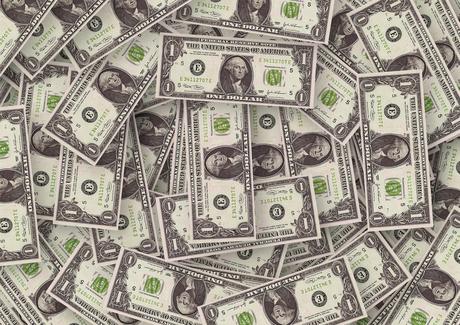The greenback is at the psychological levels at 90.00 as unemployment data disappoints. The US Treasury Yields have risen, while payroll figures disappoint.

Greenback Holding on to 90.00 Levels
The greenback went below the support level at 90.35, though it was trading just above the psychological mark at 90.00 levels. On Tuesday, the US dollar index moved lower below the 90.00 levels briefly before moving higher towards 90.02 levels during trading hours. The greenback is at a two-month low, as it trades at 90.02 levels on Tuesday, May 11.
The dollar is weaker than most currencies as unemployment data is lower than predicted. April Payroll data keep the greenback under pressure, though the index managed to stay above the 90.00 area during trading hours on Tuesday, May 11.
Inflation data will be out this week, and it keeps the US Treasury yields volatile. Investors wait for the Federal Reserve to raise interest rates as the economy gains momentum and bond purchase go down. It will help to bring back the dollar say, investors.
The next support level to watch out for is at 89.65 that the greenback reached on February 25. It has another support at 89.15 touched on January 6. These are important levels to watch out for.
Unemployment in the US
The Unemployment Rate in the US is at 6.1% in April. According to the Bureau of Labour Statistics (BLS), it is 0.1% higher than the March figure at 6.0% last month. The unemployment rate has gone much below expectations, which has added pressure on the US dollar, disappointing investors.
The Bureau of Labour Statistics reports in April that more than 2.7 million of the population were not employed for more than 52 weeks. It is more than double the number in February. The figure is almost 29% of the 9.2 million workers who were jobless in March. Sectors like leisure and hospitality have been the worst hit.
The economy has reopened after almost a year, but unemployment is one of the worrying problems that keep experts worried about the economy.
The $1.9 trillion Rescue Plan was signed by the president last month, by which $300 as a weekly supplement is provided to add on to state benefits.
Experts had estimated that the unemployment rate would be at 5.8%, and 1 million new jobs would be available. However, for every job opening, there are around 1.1 unemployed workers. The jobless rate hit a peak of 22.9% during the start of the pandemic in April 2020. The central government has plans to bring in full employment across different age groups, gender and, income levels.
Treasury Yields Rises with Inflation Worries
Treasury yields have gone up in the US to 1.627% % on Tuesday, and the 30-year Treasury bond was at 2.359%.
The Fed may tighten interest rates as the economy is expected to rebound strongly after the lockdown was removed. Higher interest rates will increase Treasury yields, say investors.
US Treasury yields have surged higher, as experts say that inflation may go higher, which is not good for the economy. 10-year Treasury yields are an important economic benchmark. When the 10-year yield increases, other borrowing rates also increase. When the 10-year yield declines, the housing market gains, and there is economic growth in the country.
Domestic fundamentals show strength as the vaccine rollout is reaching out to most people. But inflation may zoom higher with high growth. Dallas Federal Reserve President Robert Kaplan has warned about overheat in the economy with rising prices. Commodity prices are moving higher, which is bringing in a rise in Treasury yields.
Job reports have not been good, and it reflects on the yields. Inflation is increasing, which keeps the US yield higher, and bond prices lower. Moreover, the US fiscal stimulus may lead to overheating, which will bring a surge in inflation, say experts. Almost $4 trillion is pumped into the economy as infrastructure and support schemes. However, it may bring in inflation say experts.
With the covid-19 vaccination drive, people are getting better, which has brought back confidence in the economy. The fiscal stimulus has also helped the economy bounce back.
Non-Farm Payroll Figures Disappoint
Non-farm Payrolls data is not up to expectations. While forecasts predicted 978,000 job increases, the actual numbers came at 266,000 jobs according to reports from the US Bureau of Labour Statistics. March's reading was at 770,000.
Though the US economy is doing well, reports from the labour market are disappointing.
The US economy has been recovering from the Covid pandemic. The vaccine rollout has been a strong factor that has brought back confidence in the people, but non-farm payroll figures are disappointing.
Major Currencies
The sterling strengthens as almost a third of the British adult population has received the vaccination. Brexit negotiations are causing some worry to investors, as fresh concern on fishing areas continues to haunt the two regions. GBP/USD has surged past the crucial 1.41 area with yield surging.
The EUR/USD currency pair falters around the 1.21 area. The vaccine program has gathered steam, and infections are lower with more people getting vaccinated. The single currency has moved higher with the rebound in the US Treasury yield.

